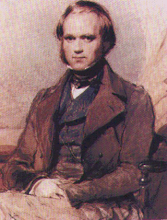
Every now and then an exceptionally preserved fossil sheds light on the biology of an extinct organism.
One such specimen was the remains of a dinosaur from Cretaceous sedimentary rocks in China. The pelvic area of the dinosaur contains two 17-cm long, potato shaped eggs that were ready to be laid when the dinosaur died.
The two eggs fill the pelvic cavity and are similar in size, suggesting that the dinosaur had two oviducts that simultaneously produced one egg each. Modern reptiles like sea turtles, have two oviducts, but produce multiple eggs; birds have single oviducts and produce only one egg at a time.
The egg-laying behavior of the Chinese combines elements seen in both these modern groups, evidence of a common ancestry in the geologic past.
Science, April 15, 2005. Tamaki Sato. Photo from the article


No comments:
Post a Comment